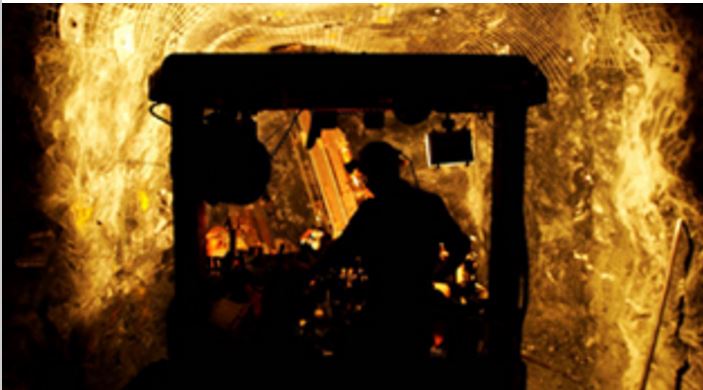There was a time a mere decade ago that we thought the mining industry was among the leaders in adopting computerized technologies. We set up seismic monitor arrays in underground mines and used computers to track and predict ground movement. We learned to computerize all types of plants and facilities to optimize underground ventilation, to assure that effluents and particulates meet regulations, to keep track of expensive tools and equipment, and much more. We explored artificial intelligence for mineral processing hoping to optimize mills, particularly where crews flew in and out weekly or monthly. We developed sophisticated computer geological models to accurately visualize mineral deposits and to predict the outcomes of milling and smelting.
[caption id="attachment_1003718330" align="alignleft" width="300"]
 Digital disconnect is a real threat to the mining industry. (Credit: EY)
Digital disconnect is a real threat to the mining industry. (Credit: EY)[/caption]
Today’s mining industry can hardly remember a time when the intuition of a superintendent was the most sophisticated method of predicting an outcome. The move is on among forward thinking companies to support disruptive technologies, those digital applications that will mark the next step-change in risk management, process outcomes, and predictive programs.
Yet the industry is on the verge of seeing the gap widen between potential productivity thanks to the gap between potential digital transformation and mining’s own poor track record of implementation, according to the latest
EY report, “The digital disconnect: problem or pathway.”
"Leading mining and metals companies are starting to look more strategically at the digital opportunity," says Iain Thompson, EY’s BC mining and metals advisory services leader. "There are big opportunities around digitization and automation in field operations. By increasing efficiencies through things like artificial intelligence for exploration, automated mining trucks or advanced simulation and optimization tools, operators can address productivity and cost challenges."
EY crunched the numbers from 700 survey respondents and found that only 31% put digital on the agenda, and 15% say its isn’t on the agenda at all.
Thompson says, "By identifying areas for improvement and where past successes have been won, mining operators can make the jump to digitization, increase productivity and decrease costs. The bottom line is the mining sector needs to embrace the digital opportunity or risk falling behind the productivity curve."
The message is clear: Ignore the next generation of digital applications and fall behind in an extremely competitive industry.
The EY report can be read by clicking
here.

 Digital disconnect is a real threat to the mining industry. (Credit: EY)[/caption]
Today’s mining industry can hardly remember a time when the intuition of a superintendent was the most sophisticated method of predicting an outcome. The move is on among forward thinking companies to support disruptive technologies, those digital applications that will mark the next step-change in risk management, process outcomes, and predictive programs.
Yet the industry is on the verge of seeing the gap widen between potential productivity thanks to the gap between potential digital transformation and mining’s own poor track record of implementation, according to the latest EY report, “The digital disconnect: problem or pathway.”
"Leading mining and metals companies are starting to look more strategically at the digital opportunity," says Iain Thompson, EY’s BC mining and metals advisory services leader. "There are big opportunities around digitization and automation in field operations. By increasing efficiencies through things like artificial intelligence for exploration, automated mining trucks or advanced simulation and optimization tools, operators can address productivity and cost challenges."
EY crunched the numbers from 700 survey respondents and found that only 31% put digital on the agenda, and 15% say its isn’t on the agenda at all.
Thompson says, "By identifying areas for improvement and where past successes have been won, mining operators can make the jump to digitization, increase productivity and decrease costs. The bottom line is the mining sector needs to embrace the digital opportunity or risk falling behind the productivity curve."
The message is clear: Ignore the next generation of digital applications and fall behind in an extremely competitive industry.
The EY report can be read by clicking
Digital disconnect is a real threat to the mining industry. (Credit: EY)[/caption]
Today’s mining industry can hardly remember a time when the intuition of a superintendent was the most sophisticated method of predicting an outcome. The move is on among forward thinking companies to support disruptive technologies, those digital applications that will mark the next step-change in risk management, process outcomes, and predictive programs.
Yet the industry is on the verge of seeing the gap widen between potential productivity thanks to the gap between potential digital transformation and mining’s own poor track record of implementation, according to the latest EY report, “The digital disconnect: problem or pathway.”
"Leading mining and metals companies are starting to look more strategically at the digital opportunity," says Iain Thompson, EY’s BC mining and metals advisory services leader. "There are big opportunities around digitization and automation in field operations. By increasing efficiencies through things like artificial intelligence for exploration, automated mining trucks or advanced simulation and optimization tools, operators can address productivity and cost challenges."
EY crunched the numbers from 700 survey respondents and found that only 31% put digital on the agenda, and 15% say its isn’t on the agenda at all.
Thompson says, "By identifying areas for improvement and where past successes have been won, mining operators can make the jump to digitization, increase productivity and decrease costs. The bottom line is the mining sector needs to embrace the digital opportunity or risk falling behind the productivity curve."
The message is clear: Ignore the next generation of digital applications and fall behind in an extremely competitive industry.
The EY report can be read by clicking
Comments